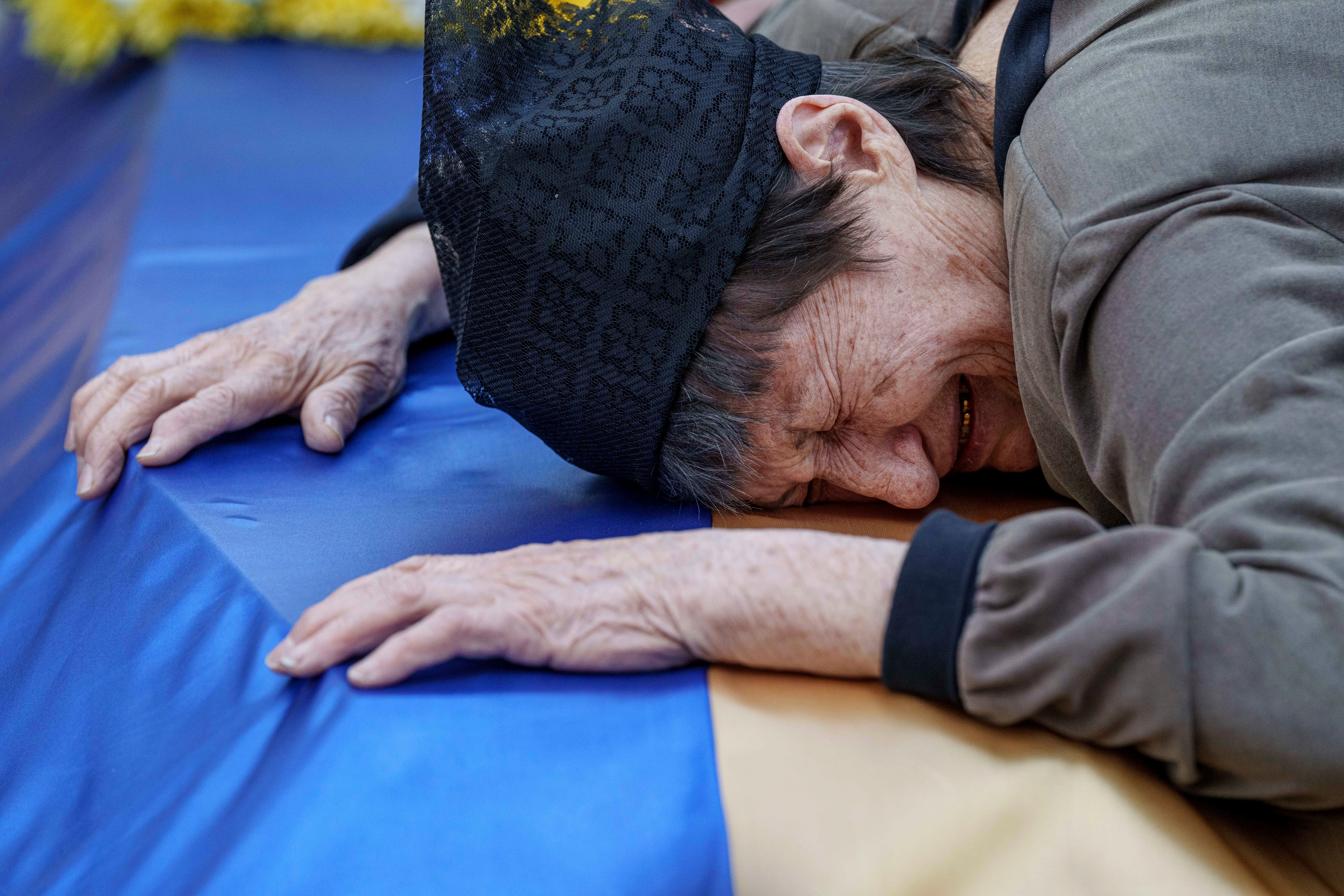I’ve witnessed first-hand the horrific cost of Putin’s war – as casualties hit 1 million
As the conflict reaches its grim milestone, The Independent’s frontline reporter Askold Krushelnycky explains why Russian forces are taking the brunt of the damage


The combined number of casualties on both sides in Russia’s war against Ukraine has reached the ghastly 1 million mark, according to a media report.
The tally of deaths in Europe’s largest conflict since the Second World War rapidly overtook the estimated 140,000 that resulted from the wars in the former Yugoslavia in the 1990s, and continues to mushroom.
The psychologically impactful number of a million casualties was reported by The Wall Street Journal, whose reporting is generally regarded as accurate.
The newspaper bases its figure on “a confidential Ukrainian estimate” earlier this year, which put the number of Ukrainian casualties at 80,000 dead and 400,000 wounded. It cites “Western intelligence” sources as estimating the number of Russian dead to be as high as 200,000, with 400,000 wounded.
However, Ukraine and Russia do not give out information about their respective military casualties, although each country has regularly floated purported numbers of dead and wounded on the enemy side; both Kyiv and Moscow have dismissed their opponents’ estimates as grossly inflated.
Even after visiting front lines and speaking to hundreds of ordinary soldiers, as well as junior and senior officers, it is impossible for anyone but a few at the top of the military and political leadership to know the true figures, and much less so for journalists, however experienced they might be in reporting from Ukraine’s battlefields.
Some Ukrainian officers and soldiers have told The Independent of horrific losses among their units. Several units told The Independent this year that only a handful out of a hundred of their comrades were left alive or fit to fight, while others talked of much lower casualty rates.
The Independent visited frontline areas in Donetsk, including the besieged city of Pokrovsk, over the last month, and it was obvious that there had been a huge uptick in the number of Ukrainian casualties.
Moscow has greatly increased its use of explosive drones and “glide bombs” this year. The glide bombs, also called “Kabs” or “Fabs”, can deliver explosive payloads in excess of 1,000lb; in comparison, a large-calibre Russian artillery shell packs only around 14lb of explosives.
The bombs destroy entire buildings, and soldiers say that even deep bunkers provide little protection against them.
Ukrainian president Volodymyr Zelensky said Moscow used 800 Kabs and almost 3,000 explosive drones in just one week earlier this month, causing enormous military and civilian casualties.
Western intelligence, independent sources and Ukraine’s own statistics cited by the WSJ show a stark disparity between the proportions of Russian and Ukrainian dead to their wounded. While five out of six Ukrainian casualties are wounded, only two out of every three Russian casualties make it to hospital, while one-third die.
That too is obvious at the front lines, where Ukrainians expend much effort and courage on retrieving their wounded so that they can be treated away from direct fire. They are treated by doctors and nurses, who have enough resources to perform simple operations that can keep the patients alive until they are transported to a proper hospital.
Russia’s casualties are much higher by contrast, because commanders throw their men into suicide-style assaults without regard for the number of dead or wounded, as there is no political blowback for Vladimir Putin in a country tightly controlled by his secret police.
Ukrainian soldiers have often told The Independent and other media how notorious the Russians are for making little effort to rescue their wounded or bring back their dead. A frequent complaint by soldiers and others close to the front lines, especially in the summer, is about the stink of rotting Russian corpses.
Ukraine is a small country compared to Russia, with a vibrant “bush telegraph”, ensuring that news travels fast. Unlike in Russia, there is freedom of speech, along with a functioning press that doesn’t just parrot government propaganda. Burials of dead servicemen and women are not hidden away as they are in Russia, and are often attended by large crowds.
These realities mean it would be difficult to conceal Ukrainian losses if they were anywhere near the scale of Russia’s.
But although Ukraine, by its own and independent accounts, has suffered many fewer casualties than the Russians, the demographic impact is huge, because Ukraine has only around a quarter of Russia’s 145 million population.
Many of Russia’s casualties have been convicts, offered freedom from long prison terms for serious crimes like murder and rape in return for military service. Most people, including their own relatives, do not mourn their deaths, and even express satisfaction that the war is getting rid of society’s dregs.
A large proportion of Moscow’s casualties come from the many ethnic regions in the Russian Federation, or from far-flung, impoverished Russian ethnic communities. These have little or no political clout to complain about members of their communities being used as cannon fodder.
By contrast, the majority of those who sprang to Ukraine’s defence when Russia first invaded in 2014, and then when it reawakened the conflict in 2022, were patriotic volunteers, and among the country’s best and brightest – the sort of men and women of whom any nation would be proud, and who are relied upon to build a better future. Their loss will be felt by Ukraine for many decades to come.






Join our commenting forum
Join thought-provoking conversations, follow other Independent readers and see their replies
Comments